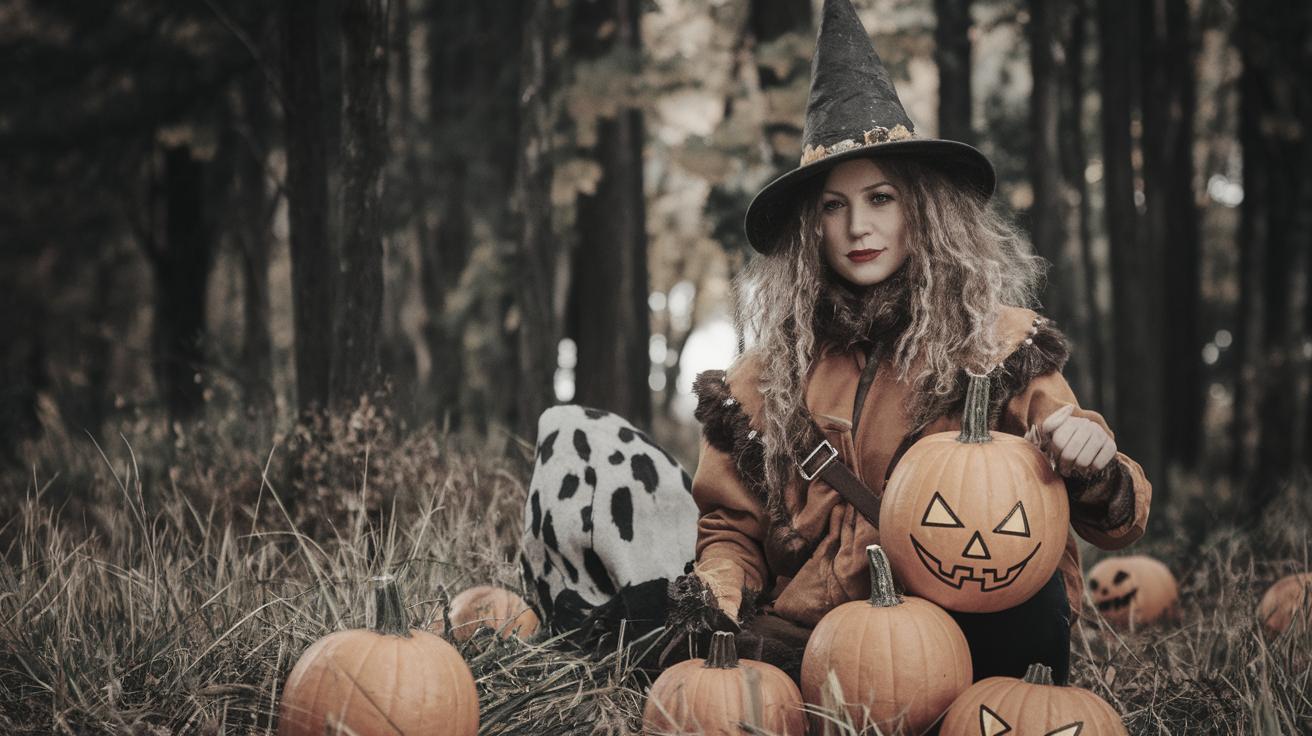How the Wild Celts Invented Halloween
Delve into the captivating origins of Halloween, a cultural phenomenon that traces back to the ancient Celts and their festival known as Samhain. This blog post explores archaeological evidence, historical contexts, and the process of Christianization that transformed the original Samhain festivities into what we now know as Halloween. Discover how this ancient tradition spread across regions and was eventually entwined with Christian beliefs. Finally, find resources for further exploration of Samhain, alongside engaging multimedia content. We wrap up with a digestible summary, perfect for both the avid reader and the casual browser.
Share this post:
Help spread the word about the origins of Halloween. Share this post with your friends and family, and spark conversations about the rich history behind one of the world’s favorite holidays.
Categories
This blog post falls under various categories, including History, Culture, Fall Traditions, and Celtic Studies. These categories encompass the diverse aspects of Samhain and its evolution over the centuries.
The Origins of Samhain
1. Archaeological & Historical Evidence
The festival of Samhain, celebrated by the Celts, marks the end of the harvest season and the onset of winter. Archaeological evidence found in ancient Celtic regions, particularly Ireland and Scotland, points to significant rituals associated with this time of year. Excavations have uncovered remnants of bonfires, which were central to these celebrations, serving to ward off evil spirits and invite communal gatherings.
Historically, Samhain was a time to honor the ancestors, believing that the veil between the living and the dead was thinnest. Historical texts from as early as the 9th century AD reference these practices, highlighting their importance in Celtic society. The Celts’ rich oral tradition further solidified Samhain’s role in their cultural narrative, passing down tales of supernatural encounters and the veneration of the dead.
2. Samhain’s Spread
The spread of Samhain’s practices coincided with the migration of Celtic tribes and the eventual Roman conquest of Celtic lands. This dispersal introduced Samhain’s customs to a broader audience, where they began to mix with other regional traditions. As Celtic influence waned, the essence of Samhain persisted, adopting elements from Roman festivals such as Feralia, dedicated to the deceased, and Pomona, the goddess of harvest and fruit.
The melding of these traditions can be traced through linguistic studies, where the word “Samhain” itself appeared in different languages and contexts, adapting to new cultural environments. Over time, Samhain’s spread beyond Celtic borders not only preserved its fundamental beliefs but also enriched it with new customs, setting the stage for its transformation in the Christian era.
Samhain’s Christianization
With the spread of Christianity throughout Europe, many pagan traditions, including Samhain, underwent significant adaptations. The church, unable to eliminate these deeply rooted practices, chose instead to incorporate them into the Christian calendar. Thus, Samhain’s celebration was reinterpreted to coincide with Christian observances, evolving into All Saints’ Day and All Hallows’ Eve, eventually leading to the modern Halloween.
This Christianization was marked by syncretism, where the commemoration of saints and martyrs supplanted the homage to ancestors and spirits. Yet, elements of Samhain persisted, such as the belief in the supernatural and rituals involving fire, which continued to play a role in these new religious contexts. The eventual global reach of Halloween owes much to this period of transformation, where old and new beliefs coalesced.
Want to learn the rest of the Samhain story? Check out…
Samhain in Your Pocket
For those eager to explore Samhain further, consider downloading “Samhain in Your Pocket,” an interactive guide that provides deep insights into its history, legends, and modern-day practices. This portable resource brings to life the ancient traditions, offering a comprehensive look at the ways Samhain continues to influence contemporary Halloween celebrations.
The guide features engaging narratives, vivid illustrations, and practical tips for those looking to incorporate traditional elements into their own Halloween festivities. Discover the essential components of a Samhain celebration—right at your fingertips.
More the listenin’ type?
Prefer audio content? Tune in to our special Samhain podcast series. Each episode delves into a different aspect of the festival’s history, featuring interviews with historians, cultural experts, and storytellers. It’s the perfect way to enhance your understanding while on the go.
Share this:
If you find this podcast series engaging, share it with your community. Whether you’re a teacher, student, or simply a history enthusiast, spreading the word helps keep the stories of Samhain alive.
Like this:
Leave a review or comment about the podcast. Your feedback is invaluable in helping us craft content that resonates and enlightens our audience.
Related
For additional reading and exploration, check out our related posts on Celtic mythology, the history of fire festivals, and the evolution of folklore throughout Europe.
Hotel initial Sablé sur Sarthe by balladins.
For travelers interested in experiencing the traditions of Samhain firsthand, consider staying at the Hotel Initial Sablé sur Sarthe by Balladins. Located in a region rich with Celtic history, this charming hotel offers a perfect base for exploring historical sites and participating in local Samhain-inspired events.
The hotel provides guided tours and special events during the Samhain season, allowing guests to immerse themselves in the enduring legacy of this ancient festival within an authentically Celtic environment.
Next Steps
| Section | Summary |
|---|---|
| The Origins of Samhain | Exploration of archaeological and historical evidence, and the spread of Samhain’s customs beyond Celtic regions. |
| Samhain’s Christianization | The integration of Samhain into Christian traditions, transforming it into All Saints’ Day, and eventually, Halloween. |
| Samhain Resources | Recommendations for further exploration, including an interactive guide and a podcast series on Samhain’s history. |
| Cultural Experiences | Opportunities to experience Samhain’s legacy firsthand, including travel suggestions and local events. |


